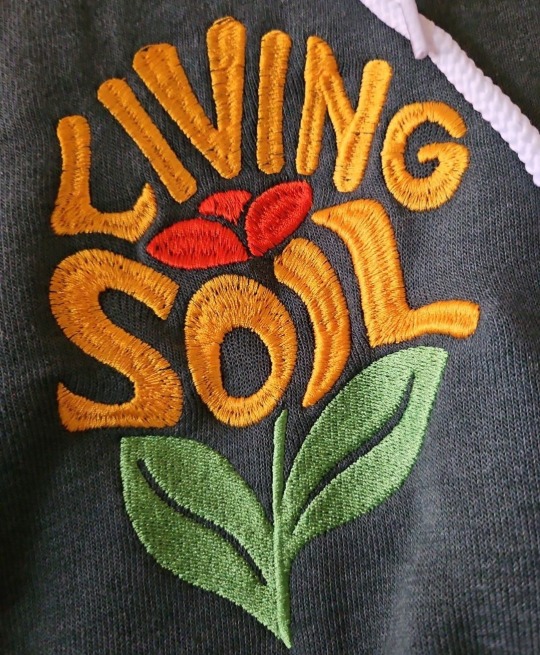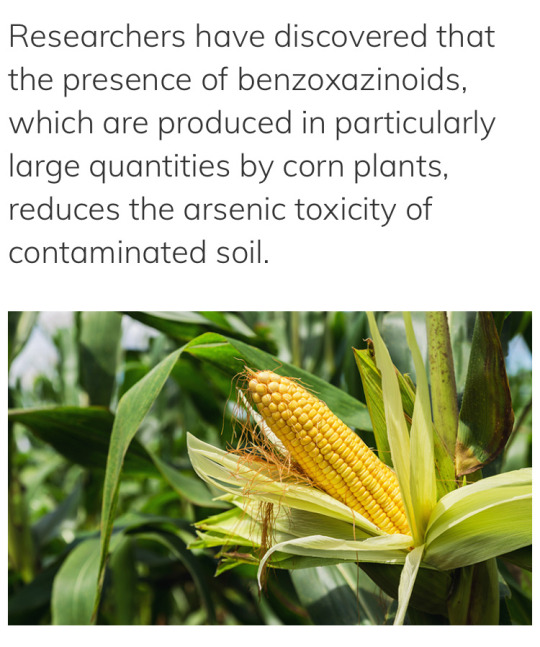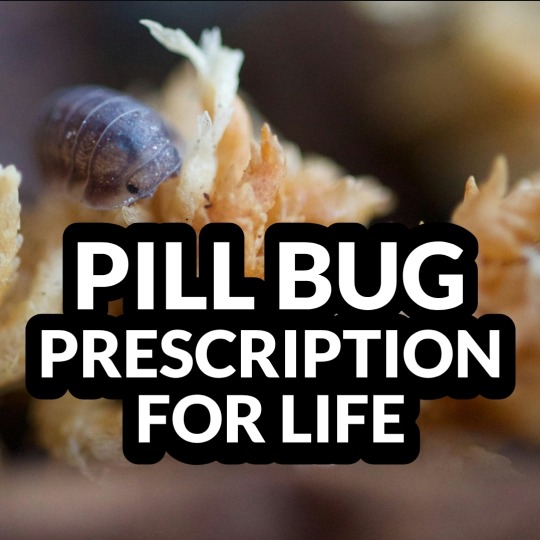#Agriculture and Soil Science
Explore tagged Tumblr posts
Text


🌱✨️ "Living Soil" Embroidered Crewnecks & Hoodies ✨️🌱
Stay cozy while supporting soil health and sustainable farming 💚💛❤️
🌟 when you sign up for email offers and updates on our website, you get a chance to win up to 50% OFF your order!
🌟 FREE SHIPPING for orders over $50!!!
#soil health#soil science#soil#permaculture#environmental education#enviroment art#regenerative agriculture#regenerative farming#agriculture#sustainable living#sustainable farming#sustainability#organic life#organic matter#organic lifestyle#organic farming#organic#compost lifestyle#composting#compost#vermicompost#biodiversity#ecomindset#conservation#microbes#plant life#plant lover#street style#hippie#stoner society
556 notes
·
View notes
Text
Recently, the research team led by Professor Wu Lifang from the Hefei Institutes of Physical Science of the Chinese Academy of Sciences, developed copper pyrazole, a novel nitrification inhibitor, and a slow-release fertilizer coated with it. "This new approach aims to improve nitrogen (N) use efficiency in agriculture," said Dr. Duan Yan, a member of the team. The related findings were recently published in Frontiers in Microbiology.
Continue Reading.
33 notes
·
View notes
Text
i make her so hot and wet her mollisol becomes an ultisol
#is this anything#soil science#soil#agriculture#soilhealth#soil erosion#mollisol#ultisol#ecology#natural science#environmental science#envsci#env sci#shitpost#shitposting#sillyposting
8 notes
·
View notes
Text
https://www.newfoodmagazine.com/news/227272/corn-plants-solution-arsenic-contaminated-soil-challenges/

#good news#soil#toxicity#arsenic#soil health#environmentalism#science#environment#corn#corn plants#nature#agriculture
10 notes
·
View notes
Text
s2e4 REPLAY Imagine Earth Without Capitalism
Martha Cinader speaks with activist Laura Lengnick in this replay of our Winter Special. Laura is an award-winning scientist, farmer and researcher. The conversation ranges from alternatives to capitalism to Earth's best practices.
s2e4 REPLAY Imagine Earth Without Capitalism featuring LAURA LENGNICK, scientist, policymaker, educator, activist and farmer. SPOKEN WORD by Climbing PoeTree and Baba Brinkman featuring Gaia’s Eye [link to transcript] SHOW NOTES s2e4 REPLAY December 26, 2024Originally Aired February 11, 2024 view image Martha Cinader speaks with author Laura Lengnick in this replay of our Winter Climate…
#activism#activist#Baba Brinkman#capitalism#climate action#climate change#climate resilience#Climbing PoeTree#conservation#Djs For Climate Change#Earth#educator#farmer#farming#Food#Gaia&039;s Eye#Laura Lengnick#Poetry#resilience#resilient agriculture#s2e4#science#soil#spoken word#spokenword#sustainability
2 notes
·
View notes
Text
Corn🌾 Corn🌾 Corn 🌾Corn 🌾Corn 🌾Corn🌾 Corn 🌾Corn 🌾Corn🌾Corn🌾 Corn🌾 Corn 🌾Corn 🌾Corn🌾Corn 🌾Corn 🌾Corn 🌾Corn🌾
🌽Corn Post🌽
Seee the videos below if you want 🌽Corn Knowledge🌽
🌽💛🌽💛🌽💛🌽💛🌽💛🌽💛🌽💛🌽💛🌽💛🌽💛🌽💛
1st) Maize: The Engine of American Civilization 🌽
youtube
🌽💛🌽💛🌽💛🌽💛🌽💛🌽💛🌽💛🌽💛🌽💛🌽💛🌽💛
2nd) Corn by John Oliver
youtube
Corn🌾 Corn🌾 Corn 🌾Corn 🌾Corn 🌾Corn🌾 Corn 🌾Corn 🌾Corn🌾Corn🌾 Corn🌾 Corn 🌾Corn 🌾Corn🌾Corn 🌾Corn 🌾Corn 🌾Corn🌾 Corn🌾Corn 🌾Corn 🌾Corn 🌾Corn 🌾Corn🌾Corn 🌾Corn 🌾Corn 🌾Corn 🌾Corn 🌾Corn 🌾Corn 🌾Corn 🌾Corn 🌾Corn 🌾Corn🌾Corn🌾

#corn#interesting#agriculture#history#soil science#capitalism#industrial agriculture#farming#corn posting#Youtube
2 notes
·
View notes
Text

Heavy spring rain physically breaks down exposed soil leading to soil erosion. Year-round ground cover protects the soil surface and enhances infiltration. Supplemental tile drainage increases infiltration and flow of water to reduce ponding. Drainage from this field with perennial grasses runs clear after days of saturating rains.
2 notes
·
View notes
Text

It's relevant I swear
#soil#meandering#soil science#amazon river#Gleysol#Plinthosol#Acrisol#Ferralsol#food and agriculture organization
3 notes
·
View notes
Text
Support Sustainable Food Production: Laboratory Technician/Senior Technician Opportunity at NUST - March 2025
The National University of Science and Technology (NUST) is seeking a skilled and experienced Laboratory Technician/Senior Technician to join their team, focusing on Food Production! If you’re passionate about supporting practical learning and research in sustainable food production, this is a fantastic opportunity. About the National University of Science and Technology: NUST is committed to…

View On WordPress
#Agriculture Jobs#Agronomy Jobs#Animal Science Jobs#Biological Sciences Jobs#Biotechnology Jobs#Bulawayo Jobs#Food Production Jobs#Hot Zimbabwe Jobs#Job Opportunity#Laboratory Jobs#Laboratory Technician Jobs#news#NUST Jobs#Research Jobs#Soil Science Jobs#University Jobs#Zimbabwe Jobs
0 notes
Text
Job - Alert 🌱

🌾 Join Universität für Bodenkultur Wien as a Full Professor of Agricultural Systems Engineering! 🌾
The University of Natural Resources and Life Sciences, Vienna (BOKU) invites applications for a Full Professor position starting October 1, 2025. This role is part of the Department of Agricultural Sciences, focusing on sustainable agricultural systems.
📅 Application Deadline: March 20, 2025
📧 Apply now: https://www.academiceurope.com/job/?id=6666
We look forward to your application!
#hiring#jobs#science#jobseekers#professor#agricultural science#engineering#plant science#life science#systemsengineering#soil science
0 notes
Text

Isopods, aka roly-polies or pill bugs, - tiny crustaceans with BIG impacts
They’re detritivores, meaning they feast on dead and decaying organic matter—like fallen leaves, wood, and even fungi. 🍂🥀🪵
Here’s why they’re vital for our soil:
🌱 Nutrient Recycling: As they munch through plant material, they break it down into smaller particles, speeding up the decomposition process. This enriches the soil with vital nutrients that plants need to thrive.
🔄 Carbon Cycling: By decomposing organic material, isopods play a key role in the carbon cycle, helping store carbon in the soil and reducing carbon loss to the atmosphere.
🌍 Soil Aeration: While burrowing and feeding, isopods loosen compacted soil, improving oxygen flow and creating a healthier environment for plant roots and microorganisms.
Found on every continent except Antarctica, isopods thrive in forests, gardens, and even urban environments. 🌟 Wherever there’s organic matter to break down, these hardworking decomposers are on the job!
So next time you see an isopod, give it some love! 🤍 They’re working hard to keep our soil alive and thriving. 🌿
#soil health#soil science#soil#permaculture#isopods#pill bug#roly poly#environmental education#environmental awareness#regenerative farming#regenerative agriculture#agriculture#sustainable living#sustainable farming#sustainability#organic life#organic matter#organic lifestyle#organic farming#organic#vermicompost#composting#compost lifestyle#compost#biodiversity#conservation#ecomindset#bugs#insects#nature lovers
87 notes
·
View notes
Text
Strategies deployed for the restoration of degraded land have had promising results in Brazil's semi-arid region, improving the microbial properties of the soil and contributing to a return of native ecosystem services. The techniques include removal of cattle or restriction of their access to specific areas of pasture; cultivation of cover crops; and terracing to control erosion. Recovery of soil microbial properties maintains biodiversity and raises crop yields, contributing to agricultural sustainability. These are the main findings of a study reported in the Journal of Environmental Management by a Brazilian research group comprising scientists affiliated with the University of São Paulo (USP), the Federal University of Piauí (UFPI), the Federal University of Ceará (UFC), and the Federal University of the Agreste of Pernambuco (UFAPE). The review article encompasses 18 studies conducted in the semi-arid region, especially the Caatinga, a local biome consisting mainly of deciduous thorn forest.
Continue Reading.
107 notes
·
View notes
Text
A Sustainable Solution to Flood-Ravaged Kenyan Communities: Chinese-funded Bamboo Agroforestry Initiative
Discover how bamboo farming along Kenya’s Nzoia River is helping farmers prevent floods, restore degraded land, and create new income sources through eco-friendly products. Learn how a China-funded bamboo agroforestry project is empowering Kenyan farmers to protect against floods, improve food security, and boost livelihoods with sustainable practices. Explore how bamboo cultivation is…
#bamboo farming#bamboo products#bamboo technology#Chinese Academy of Sciences#climate change adaptation#Climate resilience#eco-friendly income#environmental conservation#flood prevention#Food security#Kenya agroforestry#kenyan farmers#Local livelihoods#Nzoia River#riverbank stabilization#Sino-Africa cooperation#soil restoration#sustainable agriculture#sustainable livelihoods#UNEP-IEMP
0 notes
Text
Launching RegenIQ: A Scalable, Data-Driven Framework Driving the Adoption of Regenerative Agriculture
Agmatix, a leading agricultural data and AI-powered technology company, announces the launch of RegenIQ at the Regenerative Agriculture Summit in Europe. RegenIQ is designed to drive the adoption of regenerative agriculture by offering a structured approach to assessing the impact of field-level efforts, supporting both environmental health and productivity. Aligned with regenerative…
#Agri Innovation#Agriculture#AgriFood Science#AgTech#Artificial Intelligence in Agriculture#Biodiversity#Data Analytics#Data-Driven#Farm Management#Farmers - Agricultural Growers#Food and Agribusiness#Food Security#Regenerative Agriculture#Soil Health#Startups#Sustainable Agriculture
1 note
·
View note
Text
The Science Behind Soil pH for Your Garden
Soil pH is a crucial factor in gardening that affects plant health, nutrient availability, and microbial activity. Understanding soil pH and its management can significantly enhance a gardener’s ability to cultivate healthy and productive plants. Here in this guide, are things you need to understand on pH and soil is here, so keep this guide handy. Let this article help keep your garden and…

View On WordPress
1 note
·
View note